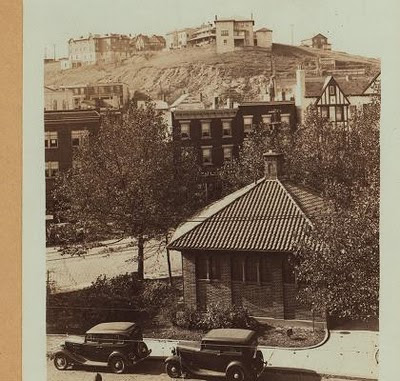The eyeball-popping parking lot mural was a harbinger of what was to follow.
By Robert Sietsma, The Village Voice.
It was a gothic conclusion to a very gothic day. It started out with a trip on the Staten Island Ferry to New Brighton, to a neighborhood overlooking New York's Upper Bay that was once the site of a Revolutionary War fort, which had honeycombed the ground underneath with secret passages.
A friend and I had gone there to see the art of Cynthia von Buhler, who plays feminist rifs on Renaissance paintings and retrofits carnie machines with contemporary messages. The art was ensconced in a four-story house on a very high promontory that had been built by a Spanish couple in the 1920s, and seemed very Addams family. Room after room was painted in a garish color, and a series of terraces climbed a hill out back, punctuated with wrought iron arches and wooden patio furniture.
One painting showed a female St. Sebastian pierced by arrows with a bottle of Ajax poised overhead, another showed a many-breasted woman lactating into the mouths of beasts. In the basement, a hollowed-out male figure had a literal rat-race in his stomach--a Plexiglas cage in which lab animals were deposited during an exhibition, and there were Mason jars in which were displayed menstrual blood, fingernails, and other body products.
Climbing up and down the stairs made us peckish, so we headed off late in the afternoon for a Mexican restaurant another friend had tipped me to in in Port Richmond. Taqueria Puebla (1285 Castleton Avenue, 718-720-1447) - referring to a southern Mexican state from which many new New Yorkers have emigrated - shared a strip mall with a bodega and a martial arts academy, whose parking lot logo was a fighter with eyeballs popping out...Continue HERE at The Village Voice website.
CONTINUE HERE.



























